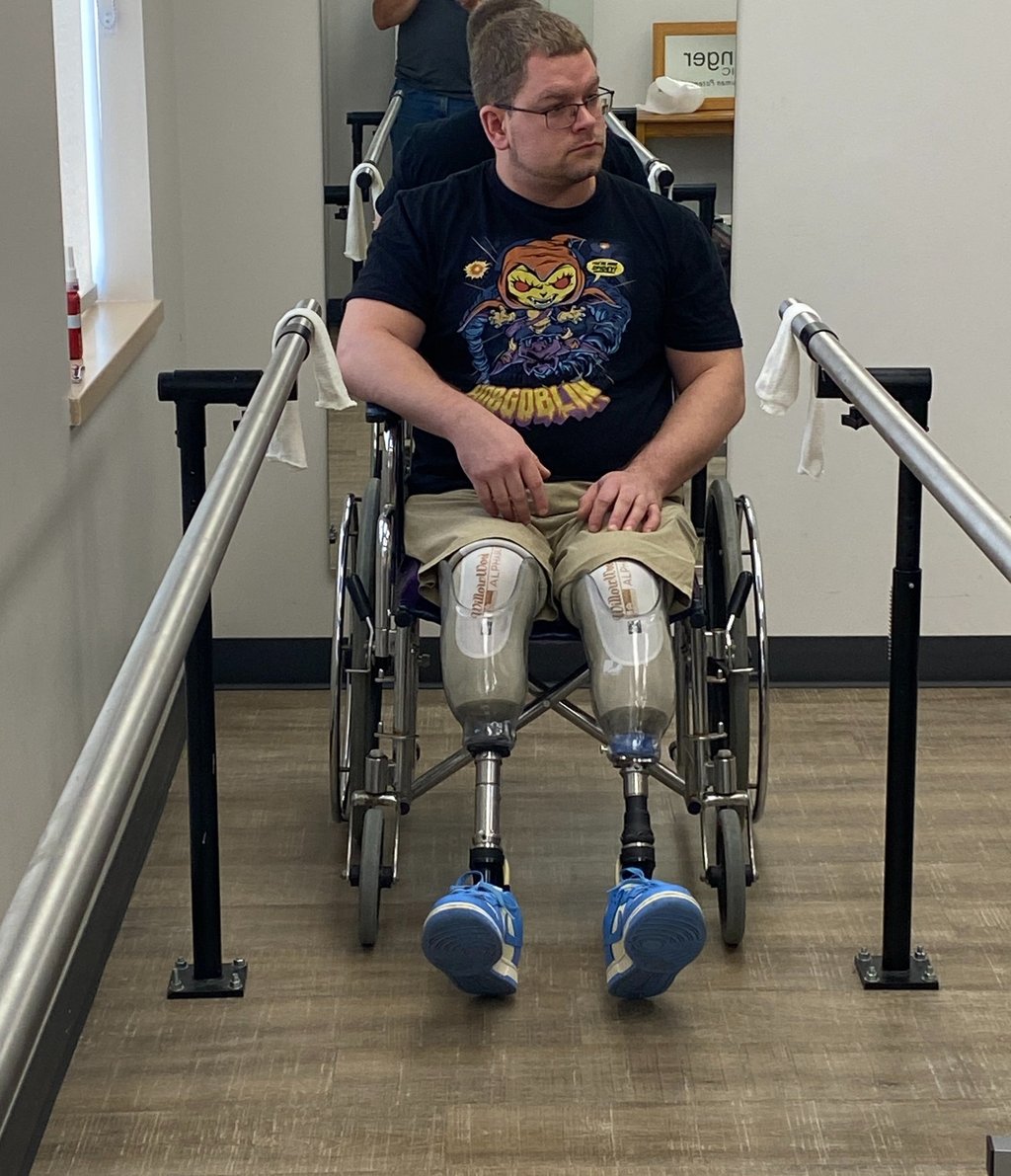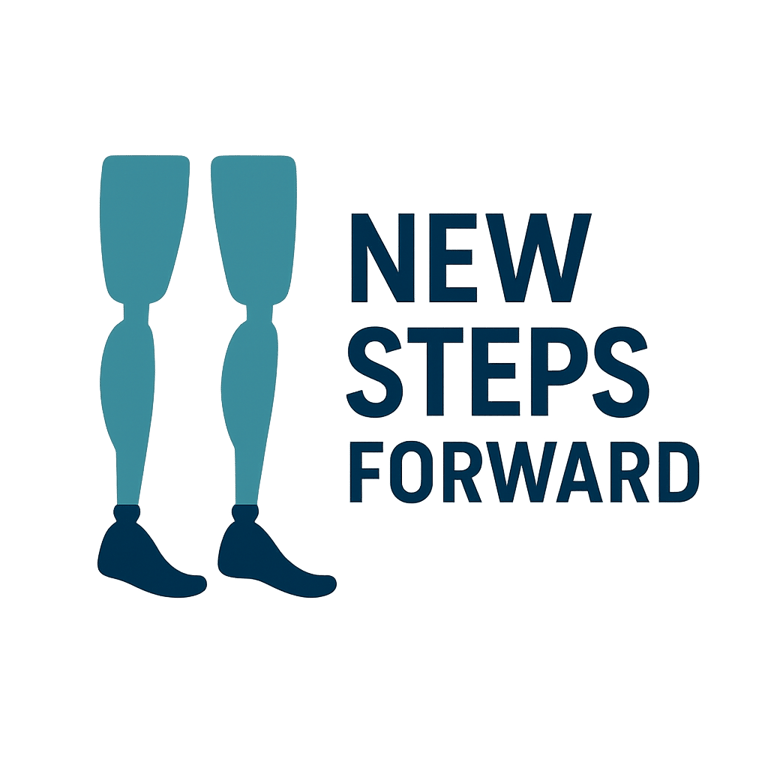
20 Breakthroughs in Prosthetics That Are Changing Lives
Explore 20 game-changing prosthetic innovations redefining mobility, independence, and what it means to rebuild after limb loss.
7/8/20256 min read


Welcome to the Future of Limbs
Let’s be real: prosthetics used to look like something out of a medieval torture chamber. Wooden peg legs, clunky hooks—function over form was the rule. But we’ve entered a new era. Today’s prosthetics are smart, sleek, and surprisingly badass.
Whether it’s a 10-year-old running on custom 3D-printed blades or a veteran controlling a robotic arm with their thoughts, the world of prosthetics is not just about replacing limbs—it’s about upgrading lives. It's about redefining what's possible, rebuilding identity, and reclaiming agency in a world not designed for limb difference. We're no longer just playing catch-up with biology—we're pushing boundaries. It’s not about getting back to where you were. It’s about launching forward in ways no one thought possible.
What Counts as a Prosthetic in 2025?
Upper-Limb Prosthetics: These aren’t your grandfather’s hooks. We’re talking Terminator-style functionality—but real. From delicate tasks like buttoning a shirt to strong grips that can lift grocery bags with ease, today's upper-limb tech is wild. Controlled by muscle signals or even brainwaves, some of these hands have more coordination than your average TikTok dancer.
Lower-Limb Prosthetics: These aren’t just legs. They’re power tools for mobility. Sensors adapt to changing terrain. Motors assist your stride. Some can even be programmed to help with specific gaits or inclines. It’s not just about walking again—it’s about walking better.
Cosmetic vs Functional: Realistic or robotic? Now you don’t have to choose. Want a leg that looks like your old one? Done. Want it chrome-plated with LED lights? Also done. Whether you’re trying to blend in or stand out, the choice is yours—and that freedom? That’s the game-changer.
Built to Move: What They’re Made Of
Carbon Fiber & Lightweight Composites: Ever held something that feels like air but can support your whole weight? That’s carbon fiber. Stronger than steel, lighter than your phone. It's become the superhero suit material of prosthetics—agile, durable, and ready for action.
Silicone Skin & 3D Printing: Silicone doesn’t just mimic skin—it mimics your skin. Freckles, veins, even that weird scar you got as a kid—it can be replicated. Combine that with 3D printing, and you’re not getting a one-size-fits-all mold—you’re getting a one-size-fits-you.
Smart Materials: Imagine a foot that stiffens when you run and softens when you stand still. Or a knee joint that “learns” your walking rhythm and adapts. Smart materials are less about the wow and more about the whoa, this actually makes life easier.
The Rise of Bionic Limbs
Brain-Machine Interfaces (BMIs): Think about moving your hand. Now imagine a prosthetic that actually does it—just from that thought. BMIs make it happen. Electrodes pick up brain signals and translate them into motion. It’s intuitive, fast, and straight out of a sci-fi dream.
AI-Enhanced Limbs: Ever wish your leg could anticipate that weird step-down into the garage? AI limbs can. They learn your habits, adjust to your pace, and help you avoid stumbles before you even know they’re coming. It's like giving your prosthetic a PhD in you.
Sensory Feedback Systems: You reach out, and you feel the cup. The pressure, the texture, even the heat. Sensory feedback tech is reintroducing amputees to sensation. It’s still early—but when “fake limbs” can feel real-world inputs? That’s next-level.
3D Printing: Your Limb, Your Way
Custom-Fit: Every limb is different. Every socket is different. And when things don’t fit right? It hurts—literally. 3D scanning captures the exact shape of your residual limb, and 3D printing builds a fit so accurate it practically hugs you back.
Cheap and Fast: Traditional prosthetics? Slow and pricey. 3D printing? Fast and affordable. We’re talking under $500 for a full limb in some cases. You get what you need quicker—and without taking out a second mortgage.
Global Access: 3D-printed prosthetics are leveling the playing field. Remote areas, underserved communities, war-torn regions—access is no longer a luxury. It’s a blueprint, a printer, and a few hours. That’s revolution.
Designed for Motion
Running Blades: These aren’t just tools—they’re symbols. Sleek, curved, and full of power, running blades are built for speed. Whether you’re chasing gold medals or the ice cream truck, they’re springy, stylish, and pure momentum.
Extreme Sports Limbs: Want to climb a mountain with a prosthetic arm? Shred down a halfpipe on a prosthetic leg? Now you can. Adaptive limbs designed for extreme sports feature shock absorbers, enhanced grip, and custom angles so you don’t just join the game—you own it.
Everyday Athletes: Not everyone’s chasing Olympic gold, but everyone deserves movement that feels free. From jogging trails to yoga mats, modern prosthetics are built to perform—not just exist. The era of “good enough” is over.
Healing Beyond the Body
Mental Health Support: Let’s not sugarcoat it: limb loss is traumatic. And the mental toll doesn’t vanish once you get your new hardware. That’s why therapy, peer groups, and emotional support aren’t optional extras—they’re essential systems. Healing starts in the mind.
Physical Rehab: Think of rehab like boot camp for your new limb. You learn how to stand, balance, lift, twist, fall—and get back up again. It’s sweaty, frustrating, and full of micro-wins that build into breakthroughs. Your body learns. Your confidence grows.
The Money Problem
Insurance Sucks: Coverage is inconsistent, confusing, and usually underwhelming. Need a waterproof limb? Not medically necessary. Want a running blade? Out of pocket. Too often, the system treats mobility like a luxury instead of a right.
NGOs Stepping Up: Thankfully, not everyone’s asleep at the wheel. Nonprofits, charities, and community groups are stepping in to bridge the gap. They’re not just giving out limbs—they’re giving people their lives back.
DIY & Open-Source Movements
e-NABLE & Others: When the system said "wait your turn," these communities said “we’ll build our own.” With open-source blueprints and 3D printers, anyone—from hobbyists to hospitals—can create customized limbs. It’s tech meets compassion.
Empowering the Underserved: DIY isn’t just cool—it’s critical. In places where medical help is miles (or years) away, open-source prosthetics mean kids can play, adults can work, and families can thrive. No lab coats required.
Where Science Fiction Meets Reality
Top Research Labs: You know it’s serious when MIT and DARPA are on the job. From arms with 26 joints to prosthetics that twitch like real muscles, the lab coats are dreaming big—and actually delivering.
Mind-Controlled Everything: We’re not just imagining it—we’re wiring it. With brain implants and nerve reconnections, people are starting to feel and move with a level of control once thought impossible. The line between man and machine is getting blurry—in a good way.
Regenerative Prosthetics: What if we didn’t need machines at all? That’s the big question behind regenerative medicine. With stem cells, scientists are exploring the possibility of growing limbs back. Not decades from now. Soon.
Not Just Tech—Stories
Veterans Reclaiming Life: These aren't sob stories—they're comeback arcs. Soldiers who’ve lost limbs are building businesses, mentoring others, climbing mountains—literally. Their limbs may be artificial, but their resilience is 100% real.
Kids Getting Their First Arm: The smile when a kid uses their first prosthetic hand? Pure magic. From superhero-themed arms to colorful designs made for play, prosthetics aren’t just functional—they’re fun. And for kids, that fun is everything.
The Ethical Wild West
Limb Enhancement vs Replacement: What happens when a prosthetic runs faster than a real leg? Or when a robotic arm lifts more than any human could? The ethics of “better than human” is murky—and urgent. Are we leveling the field or creating a new divide?
Regulation & Access: Technology is moving fast. Lawmakers? Not so much. Without smart policy, the best tools could end up in the hands of only a few. Access should be a right, not a reward.
The Next Frontier
Neural Integration: The end goal? A prosthetic that doesn’t feel prosthetic. Full nerve integration would allow for seamless control, real-time feedback, and actual sensation. It’s close. And when it happens, everything changes.
Biotech Hybrids: Limbs that heal themselves. That grow with you. That adapt to heat, pressure, even emotion. It’s weird. It’s wild. It’s coming. Biology and tech aren’t rivals—they’re teammates now.
FAQs: Real Talk
Q: How long do prosthetics last? A: On average, 3–5 years. Active users might wear them out sooner. And kids? They’re growing out of theirs like sneakers.
Q: Can you shower or swim with them? A: Some are waterproof. Some are not. There are swim-specific models—and even beach-friendly designs that won’t rust or slip.
Q: Are prosthetics expensive? A: Extremely. Prices can range from $5K to $50K+. Insurance helps (sometimes), but out-of-pocket costs are no joke.
Q: What about fingers or facial prosthetics? A: Yep. Whether it’s a pinky or a prosthetic ear, the tech is here—and it’s improving by the day.
Final Thoughts
This isn’t just about tech. It’s about identity. About power. About freedom. Prosthetics aren't just restoring motion—they're restoring life. They're rewriting the definition of ability. And the future? It’s not just bright. It’s electric.
Let’s keep pushing. Let’s keep building. Let’s keep moving—however we can.

Journey
Exploring life after amputation with hope.
Stories
Support
thomas.bish06
@newstepsforward.com
262-705-4575
© 2025. All rights reserved.
